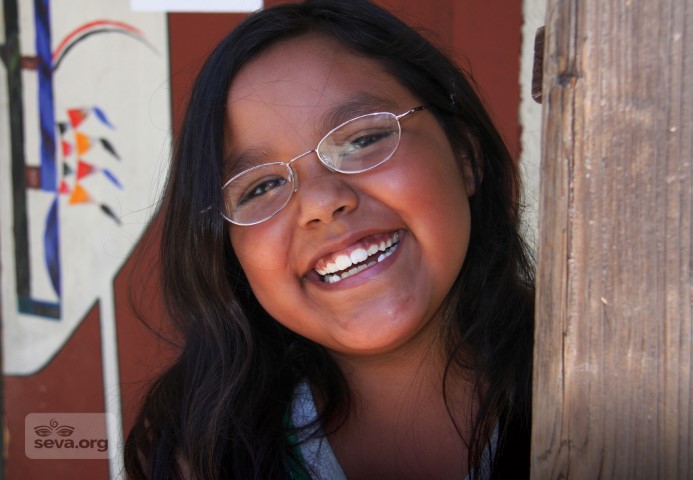The problem: preventable blindness and vision impairment
According to the World Health Organization, more than 1 billion people worldwide are living with preventable vision impairment — something that disproportionately affects the global poor. [1] Nearly 90% of those affected live in the developing world, where a combination of malnutrition, poor water quality, lack of sanitation, and inadequate healthcare and health education conspires to spread diseases that damage vision and impede access to treatment. [2]
Visual impairment further entrenches people in poverty and can be deadly for sufferers: a high proportion of blind children die within a few years of losing sight, either from the underlying disease or due to the inability of their impoverished families to care for them. [3]
“More than 1 billion people worldwide are living with vision impairment because they do not get the care they need for conditions like short and farsightedness, glaucoma, and cataract.” —World Health Organization
The solution: low-cost cataract surgeries and vision procedures
About 90% of the world’s visual impairment could be prevented or cured — in many cases through inexpensive medication or surgery. [4] Take cataracts for example: they are one of the leading causes of blindness globally, and restorative surgery costs only around $50 in the developing world. [5] [6] It’s one of the most cost- effective of all public health interventions. [7]
How Seva works
Seva’s vision is a world free of avoidable blindness. They partner with existing local programs and institutions through The Global Sight Initiative (GSI) to provide a range of vision care and blindness prevention procedures. In addition to community outreach and education programs focused on nutrition, hygiene, eye injury prevention, and awareness of local eye care services, Seva also provides free or low-cost eye exams, glasses, medical treatment, and surgery to those who cannot afford to pay the full cost of procedures.

GSI, Seva’s partnership program, enables doctors, paraprofessionals, and hospital staff worldwide to provide vision care services that their communities need — as opposed to relying on volunteer doctors from other countries. “Mentor” institutions provide training and consultancy services to “mentee” hospitals around the world to foster effective and efficient management systems and equip local staff with the tools they need to provide comprehensive care.
